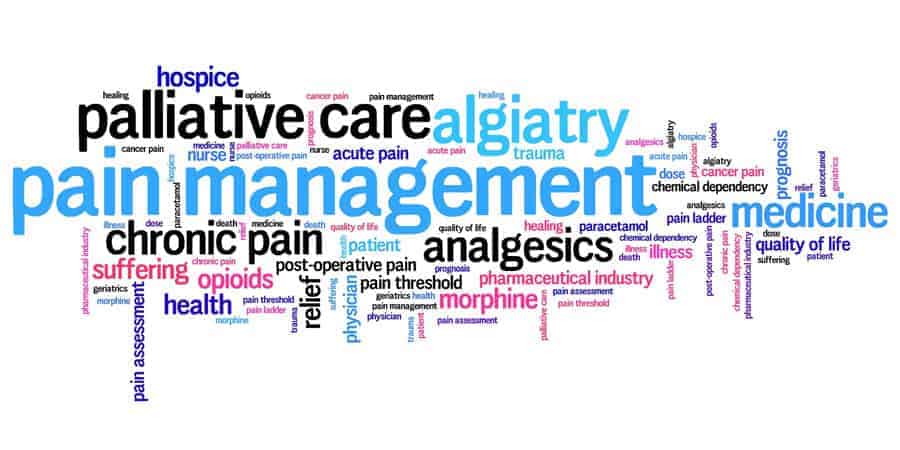Please view our updated COVID-19 guidelines and visiting procedures →.

When it comes to managing pain and shortness of breath at the end-of-life, opioids play a crucial role in providing comfort and relief. Like a fruit basket that offers a variety of flavors and textures, opioids also come in different forms, each with its unique properties and uses. In this blog post, we'll delve into the differences between two commonly prescribed opioids: morphine and Dilaudid (hydromorphone). These two opioids are most commonly used because when swallowing becomes difficult, they can be injected through an IV or under the skin, whereas some other opioids cannot.

Morphine: The Versatile and Widely Used Fruit
No fruit basket is complete without an apple, and in this analogy, that's morphine! Morphine is among the most well-known and widely used opioids for managing pain, especially in end-of-life care. It is also the oldest, original opioid. It is derived from the poppy plant. Morphine is highly effective in addressing various types and intensities of pain, making it the go-to option for many healthcare providers because, like the apple, it comes in a vast array of preformulated compounds, administration routes, and the dosage can be tailored specifically to the patient’s individual needs. Due to its long-standing presence and extensive research, morphine is well-understood and has established dosing guidelines, making it a reliable choice for pain management and breathlessness.
Dilaudid: The Specialized Fruit for Patients with Kidney Damage
Now, let's shift our attention to Dilaudid, a distinctive fruit in the opioid fruit basket. Think of Dilaudid as a juicy, tropical mango with a unique flavor and texture that caters to specific needs. Dilaudid, or hydromorphone, is a potent opioid analgesic that provides powerful pain relief, particularly for patients with kidney damage. In patients with impaired kidney function, the body may struggle to eliminate or metabolize certain drugs effectively, including morphine. Here's where Dilaudid steps in as a suitable alternative. Dilaudid undergoes a different metabolic pathway, making it less dependent on kidney function for elimination. This characteristic allows healthcare providers to choose Dilaudid for patients experiencing severe pain or for those with renal insufficiency. Its potency makes it effective in smaller doses compared to morphine which is why it is also sometimes a preferred choice.

Opioids: Other Fruit in the Basket
Although we covered the two most frequently used opioids, it is worth mentioning that in addition to these, there are many other different classes of opioids a healthcare provider can choose from. Some well-known ones are Oxycodone, Methadone, Fentanyl, Codeine, and Hydrocodone, to name a few. These each have unique properties that may influence whether they are preferred over morphine or Dilaudid (hydromorphone). In particular, Methadone and Fentanyl are compounded to be potent, long-acting opioids, which means their effects can last days. Fentanyl can even be used as a patch on the skin and is especially helpful if patients need consistent opioids to manage their symptoms but are having difficulty swallowing. Use of these medications are tailored to the specific opioid needs of the patient and usually are started after a short-acting opioid like morphine, oxycodone, hydrocodone, or hydromorphone is already in use.

One crucial consideration in end-of-life care is striking the delicate balance between alertness and the relief of suffering. Patients and their loved ones often desire pain relief, but they also want to remain awake and engaged with their loved ones during their final moments. In the community, there is a widely held belief that opioids cause excessive sedation. Although it is true that some people are more sensitive to the sedative effects of opioids (especially if they have never been on an opioid before), the science has actually proven that this drowsiness effect usually improves after several days of consistent opioid use. Unfortunately, many patients arrive at hospice within their final days and believe this excessive drowsiness is due to the opioids when it is much more likely driven by disease progression instead.
It is again worth reiterating that although opioids are very good at relieving most types of pain, they are also equally used at relieving shortness of breath. This may be especially important for patients and their families if the patient has an illness affecting their lung function. Often at the end-of-life, the body’s weakness or disease progression causes it to be much harder for the patient to take regular deep breaths. This could lead to the sensation of “air hunger,” which can cause quite a bit of anxiety for patients and loved ones alike. Opioids work to keep breathing calm and level and greatly help to reduce this potentially frightening sensation.
At some point in the journey, the patient’s family or designated person might have to collaborate with the healthcare provider on the balance of using opioids and other powerful comfort medications to relieve suffering at the cost of alertness. It is crucial to openly discuss pain management goals, preferences, and concerns with healthcare providers. Patients, if able, should actively participate in the decision-making process, ensuring their unique needs are considered by the providers as well as their loved ones before they lose the opportunity to say their wishes. If they are unable to engage in these discussions, then their designated person should make these goals based on what they feel the patient would want and what’s in their best interest. By establishing an open line of communication, patients and healthcare professionals can work together to find the perfect balance of pain relief and alertness and ultimately enhance the patient's end-of-life experience.

Choosing the Right Fruit: Collaborating with Healthcare Providers
Just as different fruits cater to various tastes and dietary needs, selecting the appropriate opioid for end-of-life pain management requires careful consideration and collaboration between healthcare providers and patients. When making decisions about pain management, healthcare professionals consider multiple factors, including the patient's pain intensity, overall health, medical history, and potential drug interactions. In some cases, other opioids like fentanyl, methadone, or oxycodone might also be considered.
Remember, pain management decisions should always be made in consultation with healthcare professionals who possess the knowledge and expertise to provide individualized care. By working together, patients and healthcare providers can find the most suitable opioid, ensuring that end-of-life pain is minimized and comfort is maximized. Just as the fruit basket presents a variety of options, so too do the opioids, providing choices for tailored pain relief during life's final stages.

As a not-for-profit, we depend on generous donors to help us provide customized services and therapies that aren’t completely covered by Medicaid, Medicare, or private insurance.
Please make a gift to help us sustain the highest standard of care.
Admissions may be scheduled seven days a week.
Call our Centralized Intake Department: (203) 315-7540.